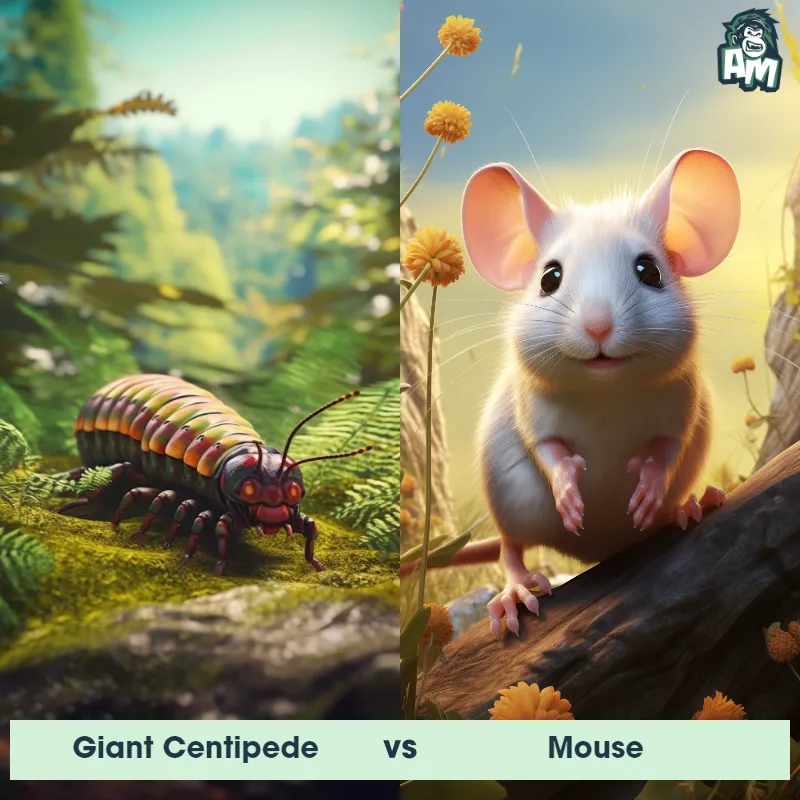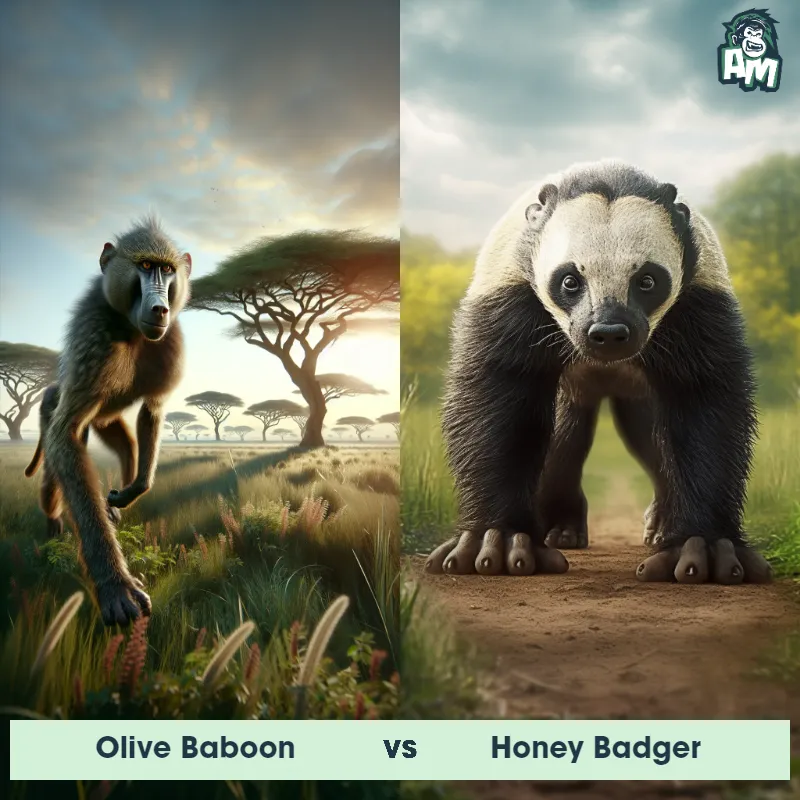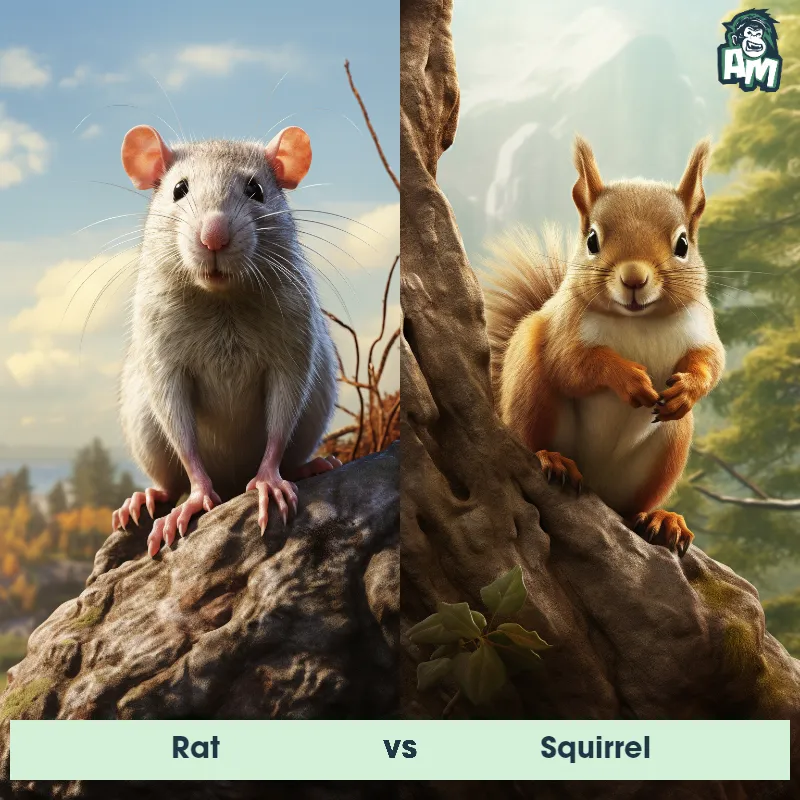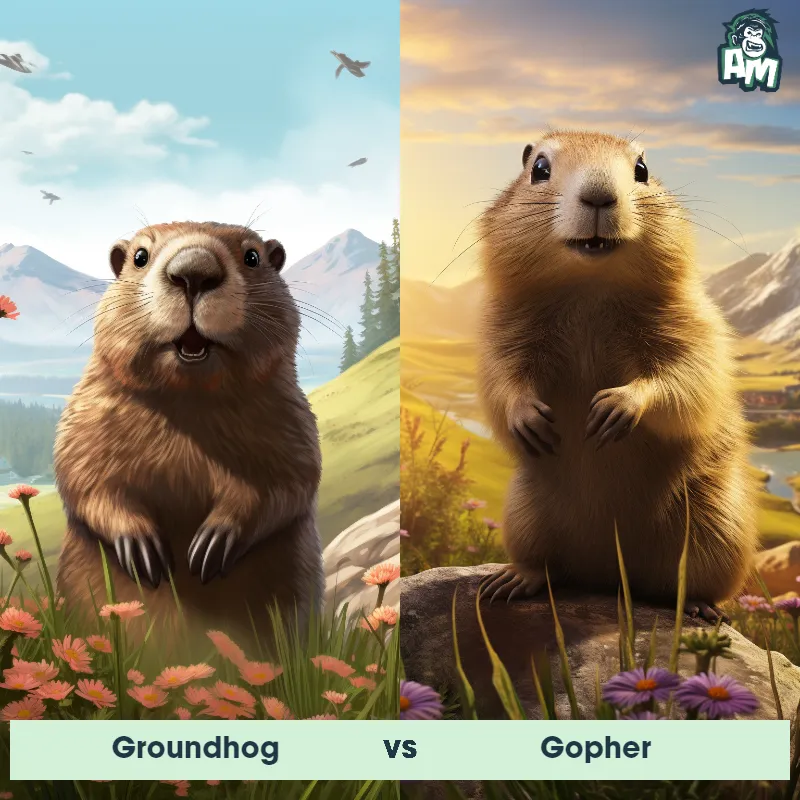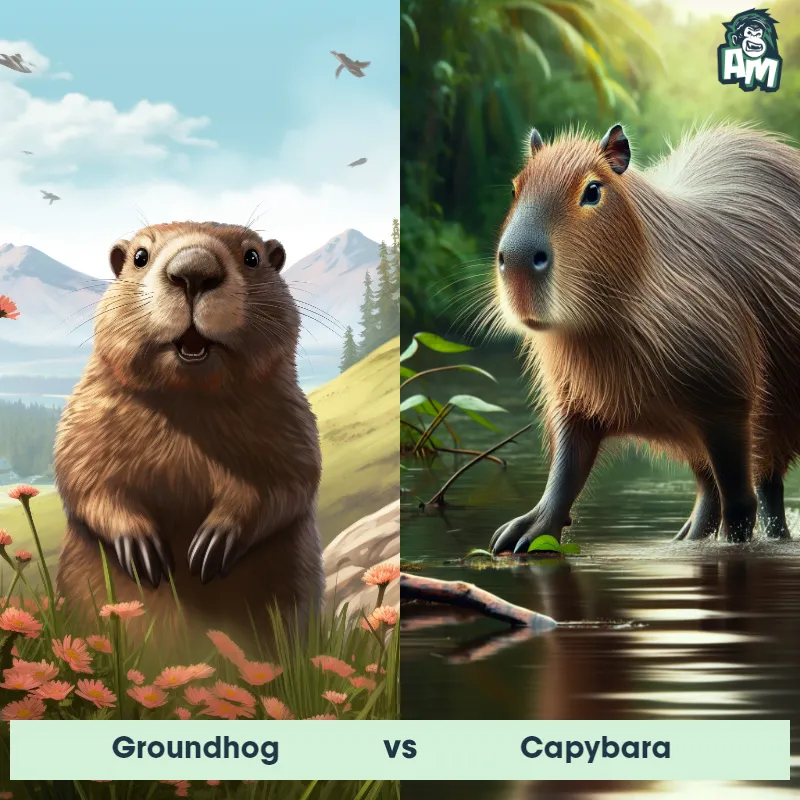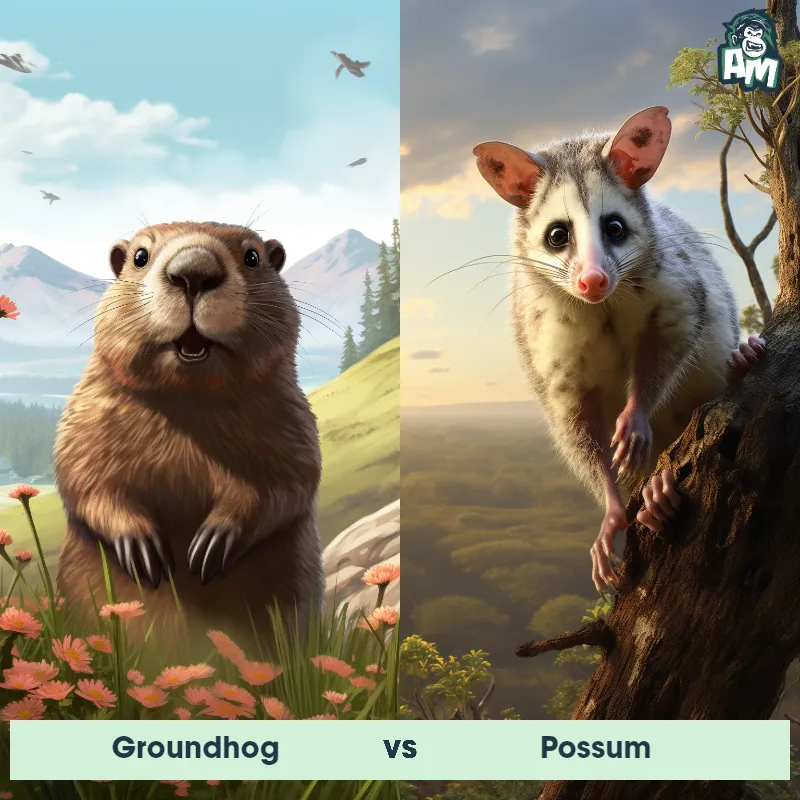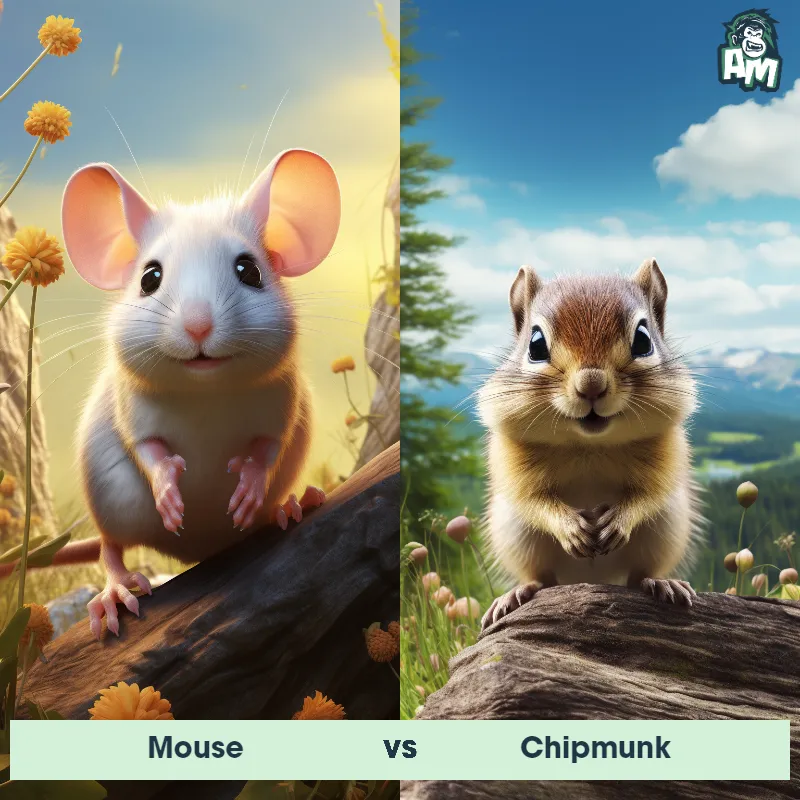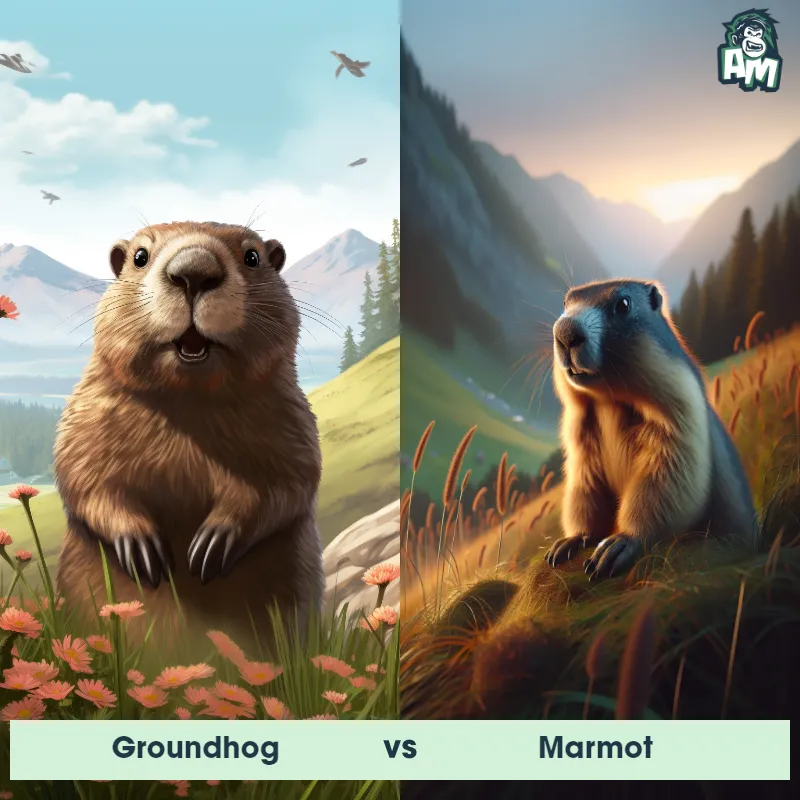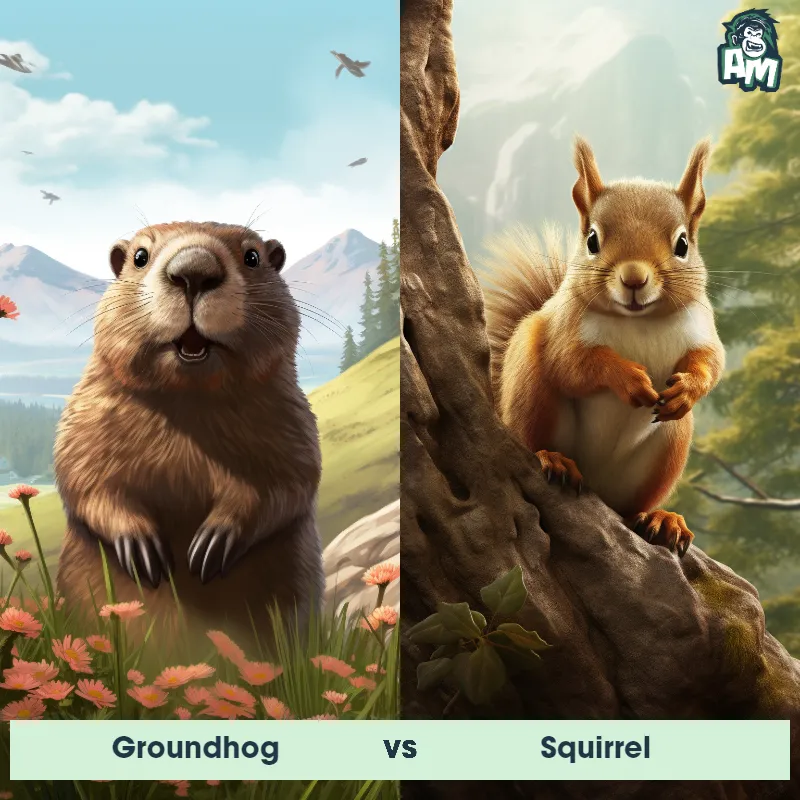Squirrel vs MarmotSee Who Wins

Ladies and gentlemen, welcome to this thrilling matchup between two agile competitors in the animal kingdom! We have a squirrel and a marmot ready to tangle in a three-round fight for the ages. These pint-sized warriors are known for their quick reflexes and cunning tactics. Let's dive into the action without delay!
Contender 1: Squirrel
The Squirrel is a small to medium-sized rodent, known for its bushy tail and agile climbing abilities. They have a slender body covered in soft, silky fur and vary significantly in color, from red and brown to grey and black, depending on the species. Squirrels are arboreal creatures, meaning they spend a significant amount of time in trees, where they forage for nuts and seeds, their primary diet.
Fun Fact: Interestingly, squirrels plant thousands of new trees each year simply by forgetting where they buried their acorns and nuts, playing a crucial role in forest regeneration.
Contender 2: Marmot
The Marmot, also known as a groundhog or woodchuck, is a medium-sized rodent belonging to the squirrel family. It is characterized by its stout body, short legs, and bushy tail. Marmots have a short, coarse fur that can vary in color from brown to gray, depending on the species. They are well adapted to an underground lifestyle, with strong claws for digging burrows that can be up to 30 feet long. Marmots are social animals, living in colonies that consist of complex tunnel systems with separate chambers for nesting and hibernating. They are herbivores, feeding primarily on grasses, leaves, and flowers.
Fun Fact: Marmots are excellent diggers and can move up to a ton of soil when constructing their burrows.
Matchup Stats
| Squirrel | Marmot | |
|---|---|---|
| Size | 5-20 inches (13-51 cm) | Up to 2 feet long (60 centimeters) |
| Weight | 0.5-1.5 lbs (0.2-0.7 kg) | Up to 13 pounds (6 kilograms) |
| Speed | 12 mph (19 km/h) | 20mph (32km/h) |
| Key Strength | Agility and Speed | Agility and ability to retreat into burrow |
| Biggest Weakness | Small Size and Lack of Defensive Weapons | Relatively small size and lack of offensive weapons |
Current Votes
Squirrel vs Marmot
See Who Wins
View More Matches
Looking For More?
Similar Matches
Scientific Stats
| Squirrel | Marmot | |
|---|---|---|
| Scientific Name | Sciuridae | Marmota |
| Family | Rodentia | Sciuridae |
| Habitat | Forests, Woodlands, Urban and Suburban Areas | Mountains and meadows |
| Geography | Worldwide except Antarctica | North America, Europe, Asia |
| Diet | Nuts, Seeds, Fruits, Insects, and Occasionally Bird Eggs | Herbivorous, primarily grasses, leaves, and flowers |
| Lifespan | 5 years - 12 years | 6 years - 10 years |
Key Differences between Squirrel and Marmot
- Habitat: Squirrels are adaptable and can be found in a variety of habitats, including forests, parks, and urban areas, while Marmots typically inhabit mountainous regions and are often associated with alpine meadows and rocky slopes.
- Hibernation: Squirrels do not hibernate, but rather remain active throughout the year, while Marmots are well-known for their hibernation habits, spending the winter months in a state of torpor to conserve energy.
- Tail: Squirrels are known for their bushy tails, which they use for balance and communication, while Marmots have relatively shorter and less bushy tails in comparison.
- Size: Squirrels are generally smaller in size, measuring around 8 to 12 inches long, including their tails, while Marmots tend to be larger, often reaching lengths of 18 to 30 inches, not including their tails.
- Social Behavior: Squirrels are generally more solitary and territorial, although some species do live in family groups; on the other hand, Marmots are highly social animals, often living in large colonies and engaging in communal behaviors.
- Coloration: Squirrels commonly display a wide range of fur color variations, including shades of brown, gray, red, and black; whereas Marmots usually have a more consistent coloration, with most species sporting brown or gray fur.







